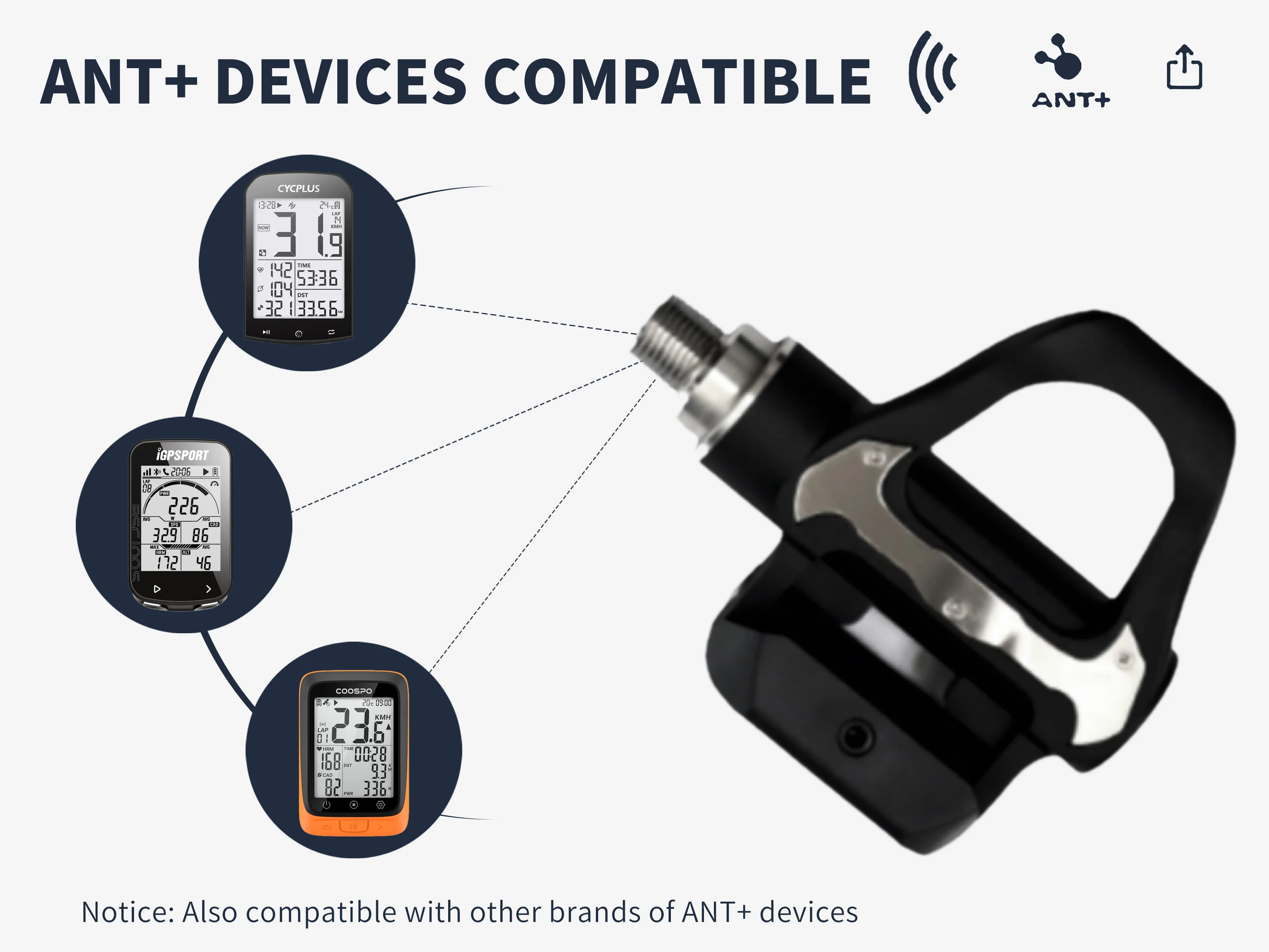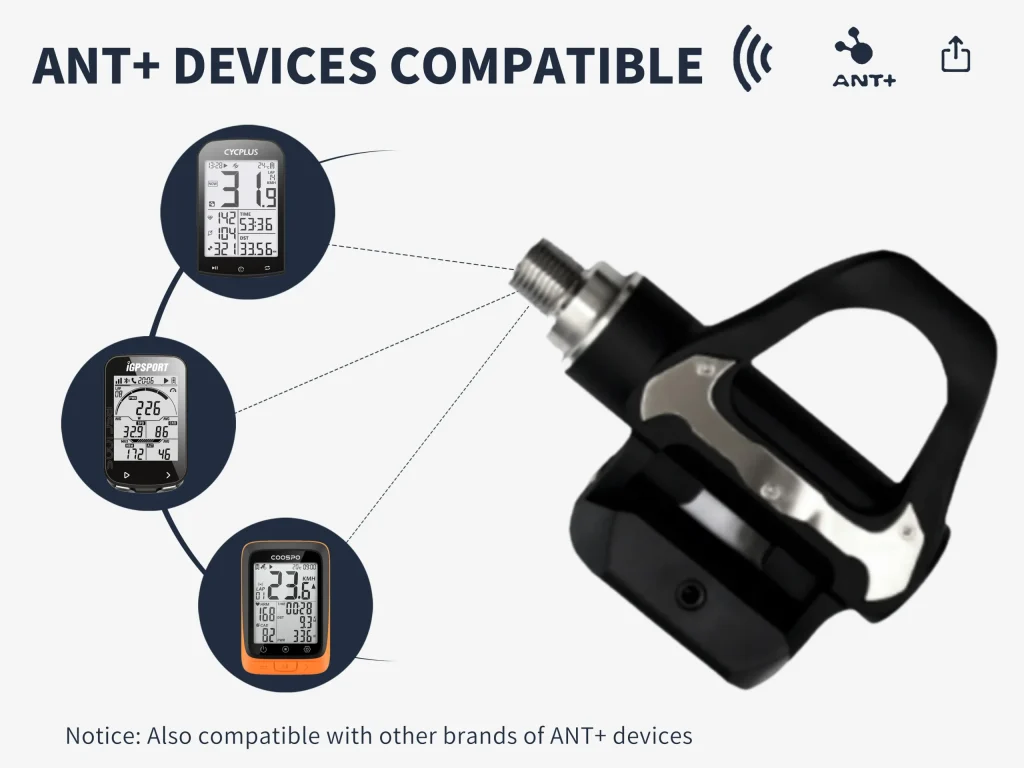Power meter pedals offer precise, real-time data on performance, allowing cyclists to optimize training and improve efficiency during rides.
Ease of Installation
The installations of power meter pedals are highly simplified, normally taking around five minutes. It does not require special equipment and the at the extreme case it only requires for you to unscrew the existing pedals. At most you will only need a hex wrench to screw the power meter pedals to the crank arm. Moreover, the simplicity of its installation feature allows an athlete to move or use it on another bike, making it a versatile option for an athlete with a variety of bikes of those working in a team where they share most of the equipment.
Another reason why they are better is the ease of access to the pedaling data, which allows you to start training as soon as possible. Often riders are not fully equipped when it comes to mechanical knowledge.
Ability of in bilateral measurement
Another beneficial feature of the power meter pedals is the ability to produce accurate measurements for each stroke. It produces detailed data of the pedaling of the left leg and the right leg. Studies show that even a small difference in strength of about 5% has a significant impact on the performance of a competitive rider . Moreover, an imbalance in pedaling between the two legs can result in injuries or other forms of strain that can affect an athlete in the long run. Bilateral measurement thus helps in detecting the inconsistencies to even out the stroke of cycling. Most smart trainers use a separate left-right-sensing powermeter. This allows a rider to feel free while training and limits the chances of overtraining as athletes are self-aware of their performance.
Training Advancements with Power Meter Pedals
The power meter pedals are among the most revolutionary items when it comes to training. It provides precise insight into the raining cyclist’s performance. The device measures wattage output in real-time. Cyclists can adjust their effort as they are riding with the guarantee that they are staying within their training zone. Those zones can be anywhere from 50 percent to 90 percent of their maximal power output. Moreover, cyclists using power training will see significant improvements in their performance. On race day, the pedal power meter will ensure that they are exerting effort, where they must.

Benefits of Power Meter Pedals
Ability to correct during real-time;
Easy to calculate and determine the cyclist’s power zones;
Training in calculated power zones guarantee results.
One of the most significant benefits of using power meter pedals is the capability to correct one’s mistake during real-time. They offer an easy way to figure and ultimately determine the cyclist’s power zone. Cyclists training in their calculated power zones, ensure that their effort is sufficient where it has to be in order to shine on race days. Essentially, it influences their performance in an array of ways. To begin with, they train the way they have to if they want to be ready for the upcoming competition or show some fantastic results during the leisure ride to the beach. As a result, it is not only about better preparation for the future race but also the ability to actually train at the calculated power zone. The option of correcting oneself during real-time is an impressive feature. For example, riding intervals or a hill-climb will require the cyclist to manage his or her power output effectively. If the required power output ride in the calculated zone for a specified interval is equal to 300 watts, but the cyclist sees that he or she is only doing 280 watts, the effort should be increased immediately. The ability to do so ensures that each and every training session is used to its maximum gives desirable results extremely quickly.
Compatibility with Various Bike Models
One of the major advantages of power meter pedals is their broad compatibility as they can fit almost all bicycle models. Such universality can be attributed to their standard thr ead size, which corresponds to the majority of road and mountain bikes. In most cases, manufacturers produce these pedals in such a way that they can be fitted on both 9/16-inch and 1/2-inch pedal threads. It means that cyclists can install such pedals on high-performance road bikes and rugged mountain bikes. In this way, power meter pedals provide a versatile solution for those men and women who have multiple bikes or switch between different disciplines.

Unique Design Elements
Along with that, unified compatibility is also achieved due to the design features of power meter pedals. For instance, it is quite common for such products to have flexible settings that can be adjusted to address different bike geometry and different shoe sizes. So one can minimize the distortion accumulated by a pedal and get as precise and valid data as possible despite the type of bicycle. This is quite advantageous for cyclists who participate in multi-discipline events or ride on different terrains.
Easy to Install or Remove
The final perk of using power meter pedals that will be discussed in this essay is its versatilities in terms of transportation from one bike to another. This process is rather straightforward and can be implemented with minimal tools, such as a pedal wrench or a hex key . This feature encourages cyclists to use power meters regardless of their primary bike, and optimized multiple bikes that are available for riding. As a matter of fact, many serious athletes find this universality of use extremely important.
Insurance and Protection of Cycling Equipment
For avid cyclists with high-value bikes and high-value high-tech components like power meter pedals, insurance on the cycling equipment is a sound investment. It is possible to insure a bike and its components for loss through theft and accidental damage ; some policies may include cover for accidents, which is of importance for those who take part in cycling races . In case the cycling equipment is relatively expensive, it is a good idea to insure it for use inside the home and out. According to U.K. policies available for cyclists, the premiums on the insurance for the cyclists will make up between 1% and 5% of the value of the bike or bikes per annum; the value of the insurance cover will depend on the conditions and based on the location of the cyclist.
Cyclists should look for insurance policies that protect them from theft and accidental damage, within and without their home, and during cycling competitions . If a cyclist is using a competitive policy, they should opt for the policy that covers competitive accidents. Another point to consider is the availability of replacement guarantees. If the policy offers the new-for-old option and the power meter pedals are no longer in production or have become more expensive, or in case the individual sensors are missing or damaged, the cyclist should be able to buy a completely new set without paying any additional fee.
Moreover, it is of utmost importance to insure one’s high-tech components. The best insurance policy is an individually tailored insurance policy. To tailor it properly, the cyclist should consider the conditions under which they travel with their bike. For instance, people who take part in cycling races need to purchase an insurance policy that also covers events. The cyclist should also insure as much equipment as possible. Moreover, there is enough inactive power meter pedals to split the sensors amongst them. Luckily, many providers offer different options for deductibles and cover limits, so the insurance policy can be tailored to accommodate all of the cyclist needs.
All that remains to do is purchase insurance. To do it, cyclists need to inventory their equipment, making sure the serial numbers of the cycling components are written down and the purchase receipts are kept, and choose an insurer that is experienced in sports equipment. They will ask for the details on the use of the bike and the cycling components, so the ones who want to save should not forget to mention they are using the devices within the home . Once the insurance is taken, the cyclist will only need to notify the company in case the bike is no longer stored indoors or they have purchased a new bike or sensors.





